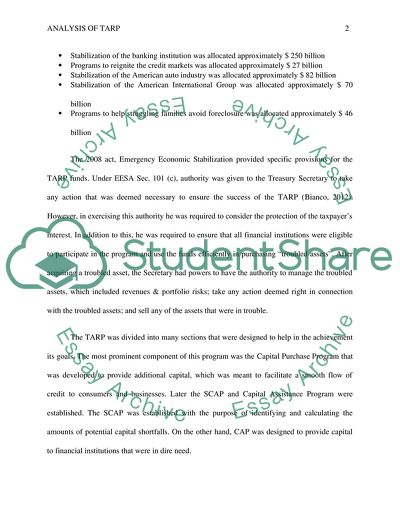Cite this document
(Troubled Asset Relief Program [TARP (Overview, History, Current Term Paper, n.d.)
Troubled Asset Relief Program [TARP (Overview, History, Current Term Paper. https://studentshare.org/macro-microeconomics/1826253-troubled-asset-relief-program-tarp-overview-history-current-effects
Troubled Asset Relief Program [TARP (Overview, History, Current Term Paper. https://studentshare.org/macro-microeconomics/1826253-troubled-asset-relief-program-tarp-overview-history-current-effects
(Troubled Asset Relief Program [TARP (Overview, History, Current Term Paper)
Troubled Asset Relief Program [TARP (Overview, History, Current Term Paper. https://studentshare.org/macro-microeconomics/1826253-troubled-asset-relief-program-tarp-overview-history-current-effects.
Troubled Asset Relief Program [TARP (Overview, History, Current Term Paper. https://studentshare.org/macro-microeconomics/1826253-troubled-asset-relief-program-tarp-overview-history-current-effects.
“Troubled Asset Relief Program [TARP (Overview, History, Current Term Paper”. https://studentshare.org/macro-microeconomics/1826253-troubled-asset-relief-program-tarp-overview-history-current-effects.


